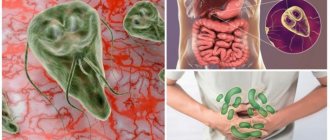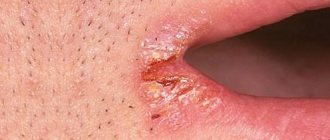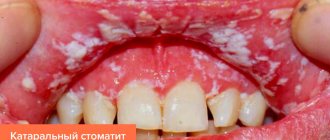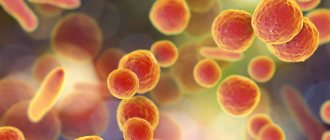The system for recycling solid formations of waste products of the body is represented by the lower sections of the digestive tract, i.e. the intestines, and in particular the thick and rectal sections. Under the influence of various reasons, the process of liberation from ballast unnecessary for the body is inhibited, leading to the development of periodic constipation at the beginning, and over time it tends to transition to a permanent form of presence. What are the main causes of constipation in adults?
Pathology development structure
Frequent constipation is quite common
A healthy state is characterized by a stable, natural sequence of the procedure of spontaneous urge to defecate, which determines the individual frequency for an individual organism, absolutely without causing feelings of discomfort and anxiety in a person. A change in stool consistency and the interval between the usual urge to have a bowel movement characterizes a pathological deviation from the norm.
The initial stage leading to the development of constipation is irritable bowel syndrome, when signs of alternating loose stools with its dehydrated form appear. Subsequently, congestion occurs in the final sections of the intestine, in which the masses are deprived of moisture and freeze, unable to exit through the anus.
Ideally, emptying is observed once during the day, but the stability of this action is observed in few people. The frequency of urges depends on the diet and nutritional balance, individual habits and lifestyle of a person. Almost a fifth of the world's population lives in a state of chronic constipation. This problem affects any age category, regardless of gender.
Symptoms
Manifestations of constipation: a feeling of heaviness and pain in the abdomen, loss of appetite, headache, dizziness, nausea, coated tongue, bad breath, heartburn, insomnia. Chronic constipation can be diagnosed if:
- stool frequency becomes less than 3 times a week;
- defecation requires strain; stools are hard or lumpy;
- there is a feeling of incomplete bowel movement.
Symptoms of constipation are very varied and largely depend on the nature of the disease that caused them. In some cases, constipation is the only complaint, in others, patients pay attention to other ailments. Sometimes patients are bothered by pain and a feeling of fullness in the abdomen; relief comes after defecation or passing of gas. A rather painful symptom of constipation can be bloating (flatulence), which is caused by the slow movement of feces through the colon and increased gas formation as a result of the activity of bacteria in the intestine. Bloating, in addition to the intestinal symptoms themselves, may be accompanied by reflex reactions of other organs: pain in the heart, palpitations, etc. Patients with constipation may experience decreased appetite, belching of air, and a bad taste in the mouth.
Characteristics of signs
Symptoms of the pathological condition include the following signs of its development:
- Feeling of discomfort in the retroperitoneal space.
- Periodic, cramping pain.
- Abdominal distension.
- Suppressing the need to eat.
- Nausea.
- The feeling of need to empty the intestines is not supported by the actions of the body
The systematic accumulation of feces inside leads to reverse diffusion of decay products through the intestinal lining, which characterizes the development of intoxication of the body. The first sign of an imbalance of substances is a deterioration in the visual condition of the skin. When pores are clogged and a pustular rash appears, it is possible to positively diagnose a change in the metabolic process in the body, which is observed against the background of constipation.
Foods allowed for constipation
- bread products made from both rye and wheat flour, but coarsely ground, dry cookies (crackers) in small quantities, savory baked goods;
- soups with vegetable and diluted meat (low-fat) broth, borscht, cabbage soup, beetroot soup, fruit soups;
- low-fat varieties of poultry, fish and meat (veal, boiled or baked turkey);
- crumbly porridge from buckwheat, millet, oatmeal, barley, cooked in water with milk;
- fresh vegetables and salads from them, seasoned with vegetable oil (beets, cabbage, beans, zucchini, tomatoes, cucumbers, green peas, pumpkin and others);
- green vegetables that are a source of magnesium (lettuce, celery, broccoli, boiled green beans and others);
- ripe fruits and berries, fruit drinks, compotes, jams made from them, apples are especially useful;
- dried fruits, which are a source of microelements, prunes deserve special attention;
- vegetable oils, butter if tolerated;
- sour cream, kefir, low-fat cottage cheese, acidophilus;
- low-fat cheese;
- soaked herring, seafood;
- rosehip and wheat bran tea, vegetable juices;
- boiled eggs and steamed omelettes;
- durum wheat pasta
- honey.
What causes constipation?
Constipation is a rather unpleasant and even dangerous problem.
The basis of the mechanism of stagnation in the intestines is characterized by the following processes:
- Active diffusion of the liquid phase of feces through the walls of the final sections of the intestine, resulting in hardening of the feces.
- A change in the contractility of the muscle layer of the intestinal walls, which provokes the pushing of feces outside the body, leading to a stop in the process of transporting internal contents through the intestines.
- The development of a tumor process or the presence of a foreign object in the lumen of an organ that interferes with the natural mechanism of defecation
The reasons for the triggering of periodic malfunctions in the digestive tract, which is characterized by signs of occasional constipation, are the following conditions:
How to take Portalac syrup?
It is convenient to take Portalac syrup – once a day. You can take the syrup diluted or undiluted - according to your taste. The effective dose is selected individually - the sufficiency of the dose will depend on the characteristics of the body.
- the initial daily dose in accordance with the instructions is from 15 to 45 ml,
- maintenance daily dose – 15-30 ml.
Thus, start the first dose of Portalac syrup with 30 ml.
If necessary, enhance the effect, the daily dose can be increased to 45 ml. Maintenance dose is the amount of the drug that needs to be taken to restore and normalize intestinal function; it usually ranges from 15 to 30 ml. Buy Portalac syrup
Anatomy of a process
The physiology of the structure of the intestine, as an organ of the digestive tract, includes several sections that provide the necessary range of functions:
- The small intestine includes the functionality of absorbing food prepared in the stomach.
- The beginning of the large intestine is represented by sections of the colon and has the ability to receive up to two liters of processed contents that have passed through the loops of the small intestine, and in the process of movement, ensuring the diffusion of fluid and minerals through the membranes of the department, while simultaneously forming feces.
- The sigmoid region is a reservoir of formed end products of the body's vital activity.
- The rectum is directly involved in the mechanism of pushing feces outside the body through the anal sphincter
Mechanism of motor activity
The process of transporting intestinal contents is ensured by spontaneous impulses occurring in the smooth muscle tissue of the walls of the organ, provoking contractile movements that push the masses along a fairly long path, which is on average from 5 to 6 meters. Muscular activity makes it possible to mix the contents more thoroughly, which ensures a more uniform thickening of the masses.
The internal contractility of the walls of the organ does not show any sensations for the body; only in the case of the development of a pathological abnormality do signs of concern develop. A person realizes the need to empty the intestines only when its contents reach the final section, as a result of which the rectum increases in diameter, irritating the internal nerve endings and forming an impulse, defined as the urge to defecate.
The direct mechanism of intestinal emptying has an equal relationship with both the voluntary course of the process and the one controlled by the person. The morning urge to defecate is normal, when the body changes its position, ensuring the movement of internal masses downward, irritating the receptors of the final section of the intestine. This phenomenon characterizes the optimal physiological rhythm of the digestive organs.
Drug therapy
Mucofalk is a drug that helps with idiopathic constipation.
If changing lifestyle and eating habits does not help get rid of constipation, resort to the use of medications as prescribed by a doctor. The main remedy in this area is laxatives.
The simplest of them is an enema with warm water and a couple of tablespoons of olive or almond oil. Pharmacy laxatives are sold in various forms: tablets, syrups, suppositories, enemas. All products have different principles of action:
- Osmotic agents increase the volume of fluid in the intestines and are used for idiopathic constipation (Duphalac, Lactulose, Mucofalk, Forlax).
- Saline - also contribute to the increase in fluid, facilitating the exit of feces (phosphates, Glauber's salt - sodium sulfate, magnesium - magic sulfate).
- Softening - helps reduce the density of feces. They are recommended for patients for whom pushing is contraindicated (almond, Vaseline, fennel oil).
- Peristalsis stimulants - increase the contraction of the rectal muscles. It is believed that the phenolphthalein they contain is very harmful to the human body, and drugs containing it are removed from production. They are replaced with other drugs of this group (Bisacodyl, Guttalax, senna-based drugs).
- Lubricants – facilitate the movement of feces through the intestines due to lubrication (mineral oils).
- Chloride channel activators improve intestinal motility and increase the volume of fluid passing through it (Lubiprostone).
It should be remembered that long-term use of laxatives is addictive. If the cause of constipation is a tumor that has developed in the intestines, surgical intervention is required.
Also, if constipation accompanies a more serious gastrointestinal or some other disease, first of all it is necessary to treat this pathology and relieve pain caused by fecal retention. Once the underlying disease is cured, constipation may go away on its own.
The process of development of pathology, depending on the cause
There are many causes of constipation in adults
Changes in the motor activity of the muscular tissue of the organ walls can develop due to the influence of the following reasons:
- Autonomic dysfunction. Characterizes disturbances in the functioning of the department of the nervous conduction system, which is functionally responsible for the activity of internal organs. It is observed as a result of psycho-emotional fatigue or a reflex effect on various parts of the intestine from organs located higher in the digestive tract system.
- Endocrine pathologies. Due to changes in hormonal ratios, which is a hallmark of diseases that tend to be protracted, they cause a weakening of the muscle tone of the intestinal walls.
- Vascular changes. Disruption of the blood flow network feeding the walls of the organ has a direct impact on intestinal motility.
- General physical inactivity. Passive vital activity leads to a weakening of the overall tone of muscle tissue, including the intestinal walls and contributing to the appearance of chronic atony of the organ. This phenomenon is facilitated by daily restriction of physical activity during the working day, constant use of vehicles for transportation, passive rest, and old age.
- Inflammatory processes. Localized within the organ, they provoke a violation of its transport function, characterizing the state of constipation.
Changes in the usual rhythm of defecation are also facilitated by unforeseen situations, such as a violation of the standard lifestyle, which may be associated with a business trip or temporary relocation, late rise in the morning and subsequent rush, a shift work schedule, etc.
Treatment methods
Treatment of defecation disorders depends on the reasons that caused them.
Treatment of constipation, which is a symptom of the disease, implies, first of all, the fight against this disease3. For example, restoring the function of the thyroid gland and the balance of its hormones has a beneficial effect on intestinal motility and stool character, and normalizing the psycho-emotional state helps to cope with irritable bowel syndrome.
Changes in lifestyle and nutrition
Recommendations regarding lifestyle and dietary adjustments are applicable in all cases of constipation.
Nutritional nature
Changing the nature of nutrition involves expanding the diet with foods that contain large amounts of indigestible dietary fiber: greens, raw coarse vegetables and fruits, bran, mushrooms, whole grain bread and cereals3.
Experts recommend consuming up to 25-30 g of dietary fiber per day1,3. They bind water, retain it in the digestive tract, increase the volume of intestinal contents, thereby stimulating intestinal motility and the movement of feces into the rectum.
Since it is problematic to cover the need for dietary fiber solely through nutrition, doctors recommend that patients take fiber in concentrated form3: wheat bran, agar-agar, flaxseed, psyllium husk, milk thistle meal1, 2.
Psyllium has the greatest ability to bind and retain water1. However, when taking it, it is necessary to consume a sufficient amount of liquid, otherwise the opposite effect is possible. In addition, you should not expect rapid normalization of stool - for this you need to take fiber for 1-2 weeks1,2.
Mandatory breakfast
To normalize stool, it is important not only to change the nature of your diet, but also to make adjustments to your eating regimen. Breakfast must be hearty3. Foods rich in fats3 are best suited for it - by acting on the stomach, they reflexively enhance the motility of the digestive tract, which promotes bowel movements.
Maintaining water regime
To maintain water and electrolyte balance, an adult needs to consume 30-40 mg of liquid per 1 kilogram of body weight per day1,2. Basic needs must be covered by drinking water2 or mineral water without gas.
In addition, if symptoms of constipation occur, adults are advised to limit their consumption of coffee and tea, as they are diuretic and cause stool hardening1.
Physiotherapy
An active lifestyle and special exercises aimed at strengthening the anterior abdominal wall and mechanical stimulation of peristalsis help solve bowel problems1.
Good Habits
To develop regular reflex urges to defecate, experts recommend emptying the rectum at the same time in the morning1,3. The preferred time is 15-45 minutes after breakfast, when the entry of food into the stomach stimulates intestinal motility and promotes bowel movement3.
Drug therapy
It is prescribed by a doctor according to the type of constipation in order to empty the rectum, alleviate the condition and normalize the functioning of the digestive tract.
Laxatives
Drugs that have a laxative effect include several groups of drugs. Only a doctor can determine which of them is best suited for certain symptoms of constipation in an adult. Despite the common indications for use, such drugs have different mechanisms of action and side effects - this should always be taken into account.
- Osmotic laxatives (saline laxatives, lactulose, macrogol) act throughout the intestine2. They are practically not absorbed inside and, remaining in the intestinal lumen, attract water3. Thinning and increasing the volume of feces stimulates peristalsis, speeds up and facilitates defecation. The downside is that often the use of drugs in this group can lead to dehydration and leaching of the microelements it needs from the body3,4.
- Drugs that irritate the intestine and thereby increase its contractions can act in the small (for example, castor oil) and large intestine (senna, buckthorn, sodium picosulfate and others)2,3. Negative point: with prolonged and frequent use, irritating laxatives are addictive and can damage the intestinal mucosa and impair its functions3.
- Emollients , such as petroleum jelly and almond oil, act at the level of the rectum and facilitate bowel movements mainly by moisturizing and “lubricating” the mucous membrane1.
- Combined laxatives acting at the level of the rectum and terminal parts of the sigmoid colon can be used to combat the problem of constipation3. An example of such drugs is the microenema MICROLAX®, the main active ingredients of which are sodium citrate, sodium lauryl sulfoacetate and sorbitol5. Sodium citrate displaces bound water from the intestinal contents, sorbitol attracts it into the intestinal lumen, and sodium lauryl sulfoacetate dilutes stool and facilitates their excretion. The action can begin within 5-15 minutes after administration of the microenema5. The high safety profile allows the drug to be used for symptoms of acute and chronic constipation in adults, including pregnant women5.
At the same time, it is important to understand that in the fight against colostasis it is not necessary to achieve daily bowel movements - it is necessary to “teach” it to work independently2.
Motor regulators
For constipation associated with increased or decreased tone of the colon, the doctor may recommend taking antispasmodic (reducing the contractility of the intestinal muscles) or prokinetic (activating peristalsis) drugs3.
Effect of diet on constipation
The balance of substances in the food consumed is of great importance for the development of intestinal dysfunction, which determines its motor activity, and in particular the sufficient supply of dietary fiber, which is contained in difficult-to-break down foods. The formation of a more hardened mass in the intestine is influenced by:
- Diet low in fiber.
- Increased diffusion of water molecules through the walls of the organ.
- Active absorption of mineral salts through intestinal tissue
Men are less likely to experience constipation than women
Food that is difficult to break down during the process of digestion includes components that have a plant base that is resistant to the influence of the internal environment of the digestive tract, in particular gastric juice. Eating such foods increases the volume of utilized masses, stimulating the functionality of the organ and regulating the frequency of the urge to bowel movement.
The absence or restriction of fiber-rich foods in the diet has a direct cause in the development of congestion in the intestines. A diet based on flour dishes or a purely meat diet leads to the formation of plaque on the inner surface of the organ, which, in the process of accumulation, forms fecal hard seals that linger in the folds of the intestine.
Preventing constipation
Prevention of discomfort depends on what you eat, whether your diet contains enough dietary fiber, and whether you have enough fluids per day.
The following are preventive measures:
- light physical activity, for example, therapeutic exercises;
- diet It is recommended to take warm liquid food for breakfast;
- drinking mineral water.
If a laxative is taken, monitoring the intake is recommended. There is no need to bring any disease to a chronic stage, this can lead to problems with bowel movements.
Features of appearance depending on gender
The female body is more susceptible to constipation than the male body, which is due to the following reasons:
- Monitoring your body shape and cutting back on your diet.
- Periods of gestation.
- Poor nutrition during a shift work schedule.
- Reducing morning preparation time
Attention should be paid to the intervals in the life of the female body when the cause of constipation is pregnancy. During the growth and development of the embryo, the intestinal loops are compressed and move relative to the enlarging uterus. Against this background, a change in vascular nutrition is observed in the tissues of organs located in the pelvic area, contributing to the manifestation of frequent constipation.
The susceptibility to impulse contraction in muscle tissue decreases during this period, characterizing the state of atony of intestinal tissue. Regular constipation during this period is recommended to be controlled to avoid the appearance of straining due to excessive efforts to empty the bowel. For men, constipation is typical for almost the same reasons; by changing the quality of food consumed and choosing a passive lifestyle, you can get stagnation in the intestines, leading to the development of many pathological abnormalities in the functionality of the whole organism.
Which doctor should I contact?
Do not delay your visit to a specialist; when the first symptoms appear, make an appointment with a gastroenterologist, you can do this here.
The doctor will familiarize you with the symptoms, provide advice, conduct diagnostics, and prescribe tests. You may need to visit other specialists, for example, a therapist, proctologist, make an appointment on the website or by phone (for English-speaking patients), +7 (495) 775-73-60 (lines work around the clock), you can also use the form on the website .
JSC "Medicine" (clinic of academician Roitberg) is located in the center of Moscow, 2nd Tverskoy-Yamskaya lane (metro stations "Mayakovskaya", "Tverskaya", "Belorusskaya", "Novoslobodskaya").
What are the dangers of constant constipation?
Proper nutrition to prevent constipation
The transition of sometimes occurring manifestations of stagnation in the final section of the intestine into a protracted, long-term form can be facilitated by the following pathological conditions:
- The process of inflammation of the rectum and sigmoid colon.
- The weakening of the motor activity of the initial part of the large intestine provokes the appearance of signs of partial return of masses to the small intestine with the development of enteritis.
- Dysfunction of the bile ducts with subsequent inflammation of the liver tissue.
- The most common complication of constipation is hemorrhoids, which characterizes the process of inflammation of the vasculature of the rectum with the formation of varicose nodes. The structures become inflamed due to frequent congestion, which causes an increase in pressure in the vessels of the organ during physical efforts to push the contents of the intestines out.
- Cracking of the anal sphincter with inflammation of adjacent tissues, which determines a pathological condition such as paraproctitis.
- Against the background of chronic constipation, the large intestine can expand and lengthen, which further aggravates the situation with the movement of masses towards exit from the body.
- The formation of a tumor process in the intestinal tissues, the development of which is facilitated by limiting the intake of fiber from food, leading to the concentration of dangerous compounds that provoke the transformation of the cellular composition of tissues into a malignant tumor. Warning signs of such constipation include sudden weight loss, weakness, and blood in the stool.
Diagnostics
Adults with complaints of constipation are referred for examination to a gastroenterologist. The doctor collects anamnesis and provides a physical examination. The complex of mandatory diagnostic measures for defecation disorders includes modern instrumental methods for studying the gastrointestinal tract, clarifying laboratory methods. The most informative are:
- Irrigoscopy
. The double contrast method allows you to evaluate the anatomical and functional features of the large intestine, detects deformations of the intestinal contours, space-occupying formations and filling defects. For a detailed study of the digestive system, barium passage radiography is used. - Colonoscopy
. An endoscopic examination is designed to thoroughly examine the intestinal mucosa and detect diseases that manifest as constipation. During the study, a biopsy of the intestine is performed to clarify the causes of the disease. In the obtained biopsy samples, the cellular composition and the number of intramural nerve ganglia are assessed. - Sonography
. Ultrasound of the abdominal cavity is informative for the diagnosis of tumor neoplasms and adhesions. An ultrasound examination of the umbilical ring and the outer ring of the inguinal canal is recommended to exclude hernial protrusions or strangulation of intestinal loops. Women must undergo an ultrasound of the pelvic organs. - Coprogram
. The dry, hard consistency of feces, “sheep” or “pencil” feces, is determined macroscopically. Microscopic examination reveals an increased content of leukocytes and rotting products. An analysis of stool for helminth eggs, bacteriological culture, and the Gregersen reaction to detect occult blood are indicated. - Blood
tests . An advanced biochemical analysis is performed, measuring the concentration of glucose and electrolytes. It is necessary to establish the amount of free thyroxine and pituitary TSH. If glucose intolerance is impaired, an oral stress test is performed. To exclude chronic posthemorrhagic anemia, a clinical blood test is performed.
Methods for determining the cause of constipation
The symptoms of the pathological deviation in most cases are always striking and determine the characteristic state of constipation. It is much more difficult to identify the immediate cause of its occurrence, which is the main factor when choosing the direction of therapeutic action. It is impossible to perform such manipulations on your own, so it is recommended to visit specialized specialists in such areas as proctology, gynecology and gastroenterology. When conducting a diagnostic examination, the following measures are used:
- Laboratory analysis of biomaterials of such types as blood, urine, feces, gastric juice.
- X-ray scanning of intestinal sections with the ability to examine the tissue relief of the mucous surface when filling the organ with an indicator substance using an enema.
- Endoscopic examination of colon tissue using a colonoscope.
- Echography of the retroperitoneal organs.
- Monitoring the motor activity of intestinal sections using periodic x-rays during the passage of feces in different areas
Depending on the causal effect, a specialized specialist will not only promptly exclude the possibility of developing a tumor process, but will also select the optimal course of restorative therapy that will help normalize the functioning of the parts of the digestive tract, effectively eliminating the manifestations of constipation.
Should not be used if you are constipated:
- bakery products made from butter dough, puff pastry, fresh white bread;
- legumes limited;
- porridge made from rice and semolina;
- pizza;
- hot seasonings (pepper, horseradish, mustard);
- jelly (lots of starch);
- limited potatoes;
- bananas;
- blueberries (lots of tannin);
- chocolate;
- mushrooms;
- confectionery products with rich cream;
- soups made from rich and fatty broths;
- fried eggs;
- fatty cheeses;
- jelly, marmalade, pastille;
- alcohol;
- flour dishes (dumplings, dumplings, pies, especially fried ones).
ethnoscience
Eating dried fruits will help relieve constipation.
Traditional medicine can be used to combat constipation at home. The most effective medicines based on buckthorn are:
- Buckthorn. The folk medicine is widely used to relieve chronic constipation. To prepare the medicine, you need to take the fruits of this plant in the amount of 2 tablespoons and add 0.5 liters of water. The drug is infused for 2 hours. After cooling, the folk medicine is filtered and used for oral administration of 100 milliliters before bedtime.
- Dried fruits. This is not only healthy, but also quite tasty medicine. You need to take dried apricots, raisins, prunes, and figs. All components must be mixed in equal quantities and pour boiling water. The medicine is infused for 12 hours. After this time, it is necessary to strain off the folk medicine and pass the dried fruits through a meat grinder. The resulting gruel is mixed with hay grass and honey. The medication should be taken in the evening before bed, one tablespoon.
- Carrots. Patients are recommended to consume the seeds of this plant. Every day you need to drink 2 grams of the drug.
- Rhubarb. Patients are recommended to eat the root and above-ground parts of this plant. It is also used for making jelly and compotes. You can treat with rhubarb root powder. It should be consumed 1 gram before meals.
Despite the high effectiveness and safety of traditional medicine, it is necessary to consult a doctor before using them, which will eliminate the possibility of unwanted effects.










